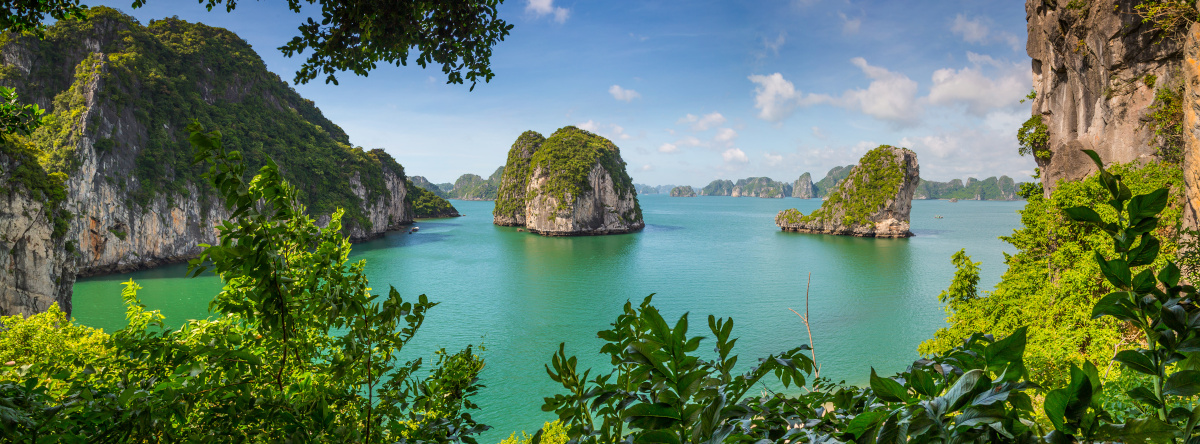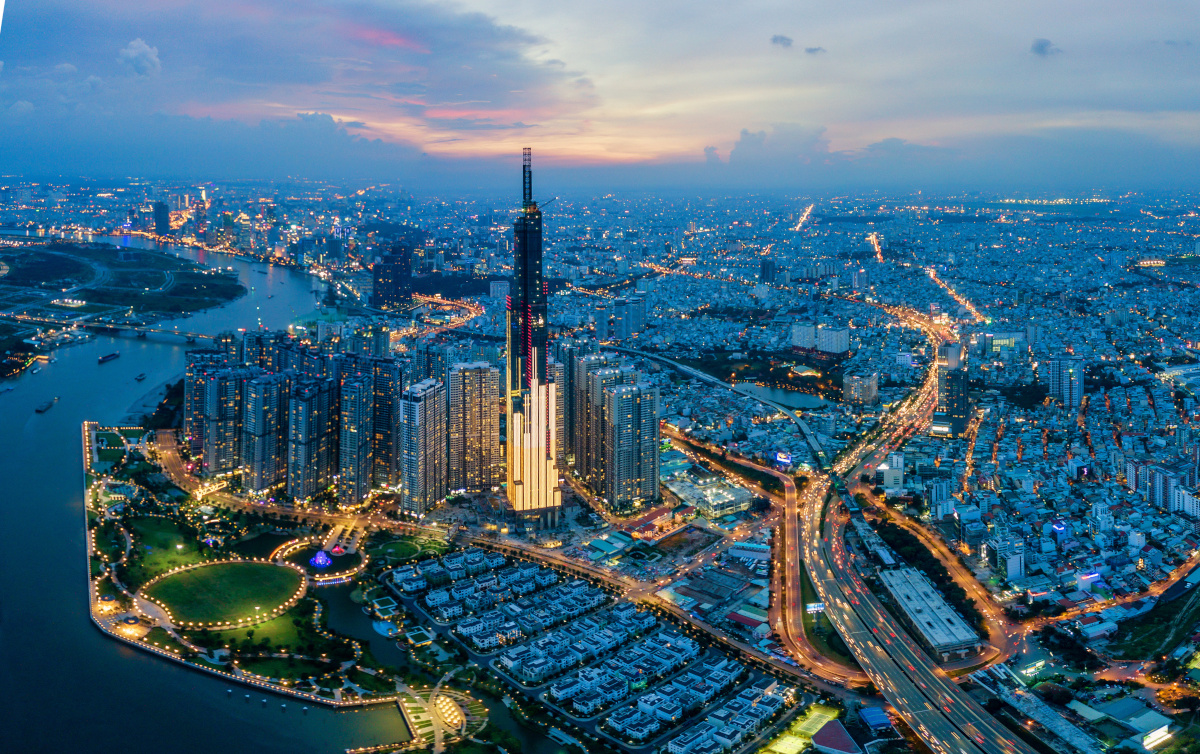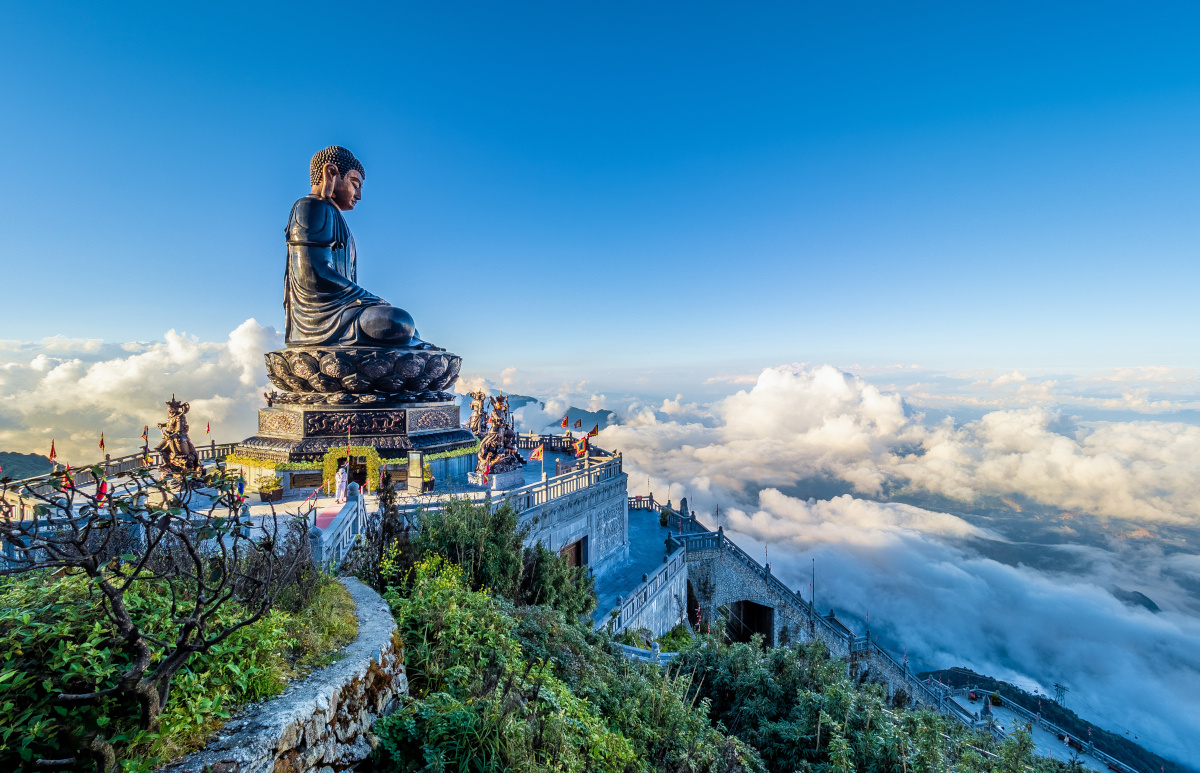
Vietnam Travel Insurance: What You Need to Know Before You Go
Protect Your Vietnam Adventure with the best trip insurance from Redpoint
Whether it's exploring caves, scuba diving, taking a river cruise, or traveling by motorbike, all adventures come with some risks. That's why you'll definitely want to take out travel insurance before you embark on your trip to Vietnam.
In addition to covering you for minor disruptions, like flight or baggage delay, travel insurance provides coverage for emergency medical expenses and emergency evacuation — both situations that can arise when you are traveling off the beaten track.

Health & Safety in Vietnam
Vietnam is considered a low-risk destination and has low levels of violent crime. However, as usual for any tourist-heavy destination, petty crime, such as pickpocketing and bag snatching, do happen in crowded, heavily-trafficked areas. In addition, some tourists find that being overcharged for taxis and being met with exorbitant fees at currency exchanges are common scams.
For travel tips and the most up-to-date information on Vietnam health and safety, always consult the U.S. Department of State’s country information page while planning your trip. U.S. travelers should also register for the Smart Traveler Enrollment Program (STEP) before departure, which will allow the State Department to reach out in case of emergencies, and to deliver timely updates on health, weather, safety, and security in your destination.
U.S. travelers heading to Vietnam should ensure they’re up-to-date on routine vaccinations, including measles, mumps, and rubella (MMR), as well as tetanus and hepatitis A. The U.S. Centers for Disease Control and Prevention (CDC) also recommends vaccines for typhoid, hepatitis B, and Japanese encephalitis, depending on the length and location of the stay.
Mosquito-borne diseases, such as dengue fever and malaria, are concerns, particularly in rural and forested areas. Use insect repellent, wear long sleeves, and consider antimalarial medication for high-risk regions.
Rabies is also present in Vietnam, so travelers should avoid contact with stray animals, particularly dogs and monkeys. Pay attention to all posted advisories and local guidance about dealing with wildlife or traversing rural areas.
Vietnam’s natural and diverse landscapes are stunning and make the country a huge hit with adventure travelers. However, there are some risks. Venomous snakes, including cobras, are found in rural and jungle areas, so hikers should wear protective clothing and be cautious. Leeches are common in wet, forested regions, particularly after rain.
As for natural disasters, Vietnam experiences typhoons from June to November, which can lead to flooding and travel disruptions. Landslides can occur in mountainous regions, especially after heavy rainfall. Avoid traveling by motorbike after extreme weather events, as roads can become impassable and dangerous in rural areas. Travelers should monitor weather forecasts, follow local advisories, and plan accordingly if visiting during the rainy season.
Traffic in Vietnam is chaotic, especially in cities, and motorbikes dominate the roads with little adherence to traffic laws. It can take visiting pedestrians several days to feel comfortable crossing the road, as vehicles and motorbikes rarely stop for traffic and there are few organized crossings.
Public transportation, such as buses and trains, is generally a safe option, but tourists should be cautious when using motorbike taxis. For the safest option, use ride-hailing apps like Grab instead of unlicensed taxis.
Insurance Benefits & Coverage for a Trip to Vietnam
The components of any good travel insurance policy are the same. Before you settle on a plan, carefully read over the policy wording and the full details of your coverage benefits to make sure everything listed below is included. That way, you’ll be able to travel with confidence — no matter what comes your way in Vietnam.
Trip cancellation and trip interruption insurance:
Travel medical insurance:
Emergency medical evacuation insurance:
Baggage and personal belongings insurance:
Trip delay insurance:
Redpoint has a selection of travel insurance plans that offer crucial coverage for any type of trip to Vietnam, no matter your activity level or travel needs.
For adventure travelers looking to explore by motorbike, cruise the Mekong Delta, or discover the country’s many caves and waterfalls, Ripcord is an extensive travel plan with high coverage limits and enhanced coverage.
Redpoint’s other policies provide comprehensive and tailored trip protection for a wide range of situations too, from travel delays to trip interruptions to unexpected medical fees.
If you’re sticking to deep dives into the amazing culture and food of Hanoi, Ho Chi Minh City, or Da Nang, Cavalry is particularly suited for urban travel and luxury experiences, while Harbor offers robust coverage for the budget-minded leisure traveler.
You can buy travel insurance for a single trip to Vietnam, or purchase an annual policy for multiple trips. Check out our plan options and get a quote today.
FAQs for Vietnam Travel Insurance

1. Is travel insurance mandatory for Vietnam?
If you need to seek medical attention, travel insurance can help prevent large out-of-pocket charges, as well as recoup you for other travel expenses that might be incurred.
2. How much is travel insurance for Vietnam?
3. What should your travel insurance cover for a trip to Vietnam?
Check your policy details to make sure it also includes 24/7 assistance services, which all of Redpoint's policies offer.
4. Are there any COVID-19 restrictions for travelers to Vietnam?
5. Are the hospitals good in Vietnam?
6. What happens if a tourist gets sick in Vietnam?
Whether you go public or private, you'll want travel insurance cover to help with hospital fees, doctor visits, and medications. In serious cases, medical evacuation may be necessary, and that can be very expensive without insurance.
If you need emergency assistance in Vietnam, dial 115. Redpoint can also be reached round-the-clock at +1-415-481-0610.
7. What documentation is needed to visit Vietnam?
You'll also need to obtain a tourist visa prior to arrival. Vietnam offers a convenient e-visa program that you can apply for online, so you won't have to visit a Vietnamese embassy before you leave.
8. Is Vietnam safe to visit?
Regardless, you should always check the State Department’s country information page for any breaking news on health and safety in the build-up to your trip to Vietnam.
9. Is Vietnam safe for female travelers?
However, it's always best to take precautions, such as avoiding deserted areas at night, dressing modestly in rural regions, and being cautious when accepting invitations from strangers.
10. How do I contact the U.S. Embassy in Vietnam?
7 Lang Ha Street
Hanoi
Tel: +84-24-3850-5000
Redpoint Travel Protection Is Here to Help
Redpoint is known for comprehensive and easy-to-understand policies to suit any trip, from cultural adventures in Vietnam’s major cities to exploring its natural wonders, so you can travel with confidence. Take a detailed look at our travel insurance plans — Ripcord, Cavalry, and Harbor — and get a quote for your next trip today.

